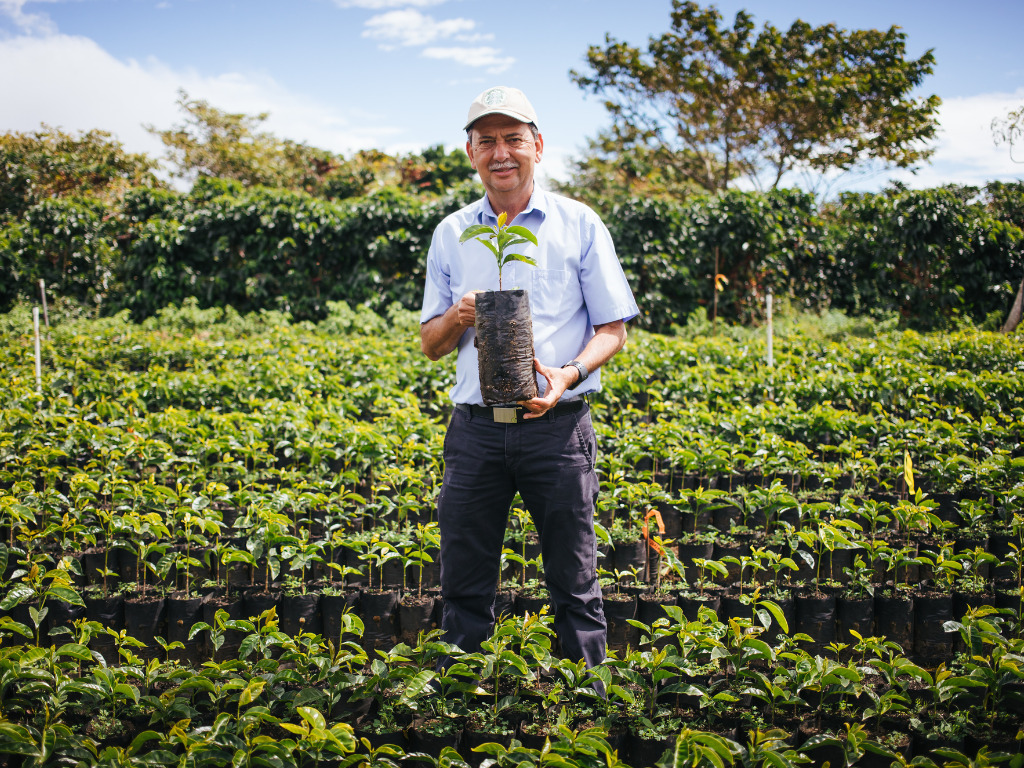9 Mins Read
It may be PSL season, but coffee as we know it is changing (for the worse), and we need solutions – how can Starbucks, the world’s largest coffee chain, help mitigate the impact of climate change on our morning routines?
If you’re like me, you probably survive on that iced latte in the morning. I genuinely feel like a new person with that first sip of coffee, having spent a few minutes using my Aeropress and shaking out my oat milk to create a silky, foamy texture. I love that part of my morning.
But my daily routine is under threat. In a few decades, I might not have much coffee to brew, because there wouldn’t be much grown. At least the really good kind – arabica, one of the two main species of coffee produced and consumed around the world (the other being robusta) could go extinct by 2050, according to one study.
It’s not a great look for the rest either: of the 124 known coffee species, 75 (that’s 60%) are under the threat of extinction. And if that’s not enough for you, the amount of coffee-growing land – essentially a ‘belt’ that lies between the tropics – will be halved by the end of the century.
This is all thanks to climate change. But the challenges don’t end there: coffee and our (read: my) demand for it are not great for the environment either. So it’s a two-way problem: our insatiable appetite for coffee is being hampered by an increasingly fraught supply chain.
Coffee is amongst the highest-emitting foods in the world, topped only by dark chocolate and red meats like lamb, mutton and beef (which is the worst food for the planet). Even so, when it comes to emissions per 1,000 kcal, coffee ranks top of the list – yes, even higher than beef.
According to Our World in Data, in terms of carbon opportunity costs – “the amount of carbon lost from native vegetation and soils in order to produce each food” – coffee only comes behind meats like sheep, goat, beef and buffalo, and cocoa beans.
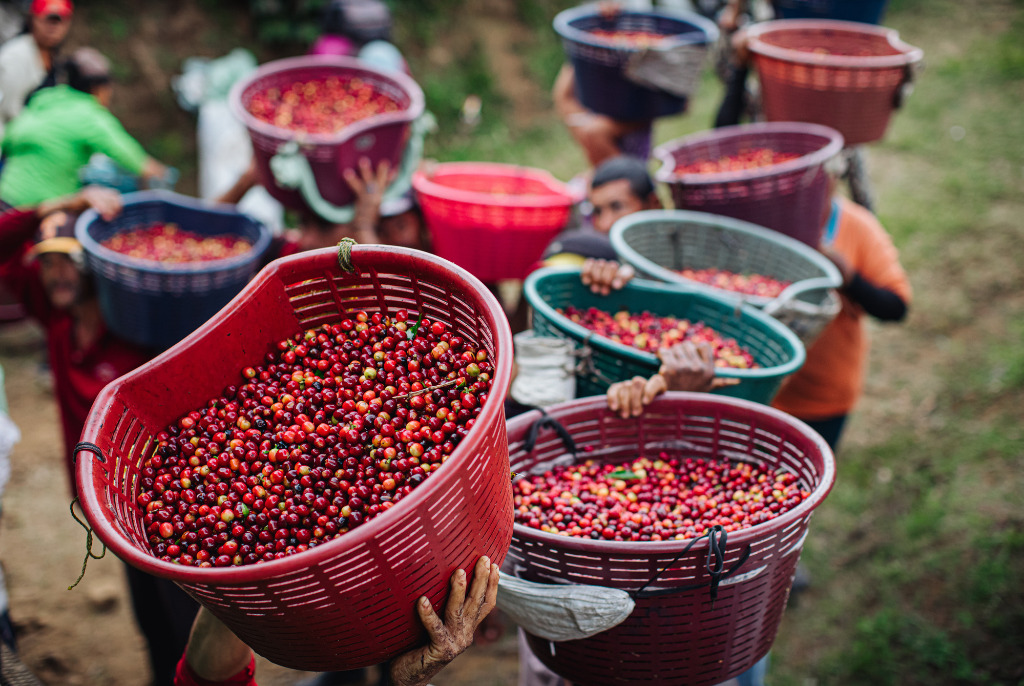
So what do we do?
I learnt a lot of these stats when I was working at Starbucks as a barista. I was lucky enough to work in some of the company’s Reserve stores, which meant that we learnt more about where its coffee comes from, as we often hosted workshops for corporate clients and the public.
As the largest coffee company in the world, Starbucks says it buys 3% of all coffee grown from 400,000 farmers in 30 countries, to supply its over 36,000 stores (that’s about three times higher than Dunkin, the next biggest). Given its significant footprint – both environmentally and commercially – the company has a responsibility to ensure its operations are as sustainable as possible.
In 2020, it laid out its 2030 Sustainability Plan, where it pledged a 50% reduction in its greenhouse gas emissions, water withdrawal, and waste sent to landfill. In 2021, it made a further commitment to conserve its water usage for green coffee processing by 50%, and switch to carbon-neutral green coffee by 2030.
And while these steps are a good start, they can only really be quantified with real action. So for a company famous for its green logo and aprons, how green are its operations and its supply chain?
We contacted Starbucks to find out more; here are six ways it says it’s fighting the climate (and coffee) crisis.
Plans for a dedicated sustainability learning & innovation hub
A decade ago, Starbucks purchased the Hacienda Alsacia farm in Costa Rica, which is to date the only coffee farm owned by the company. This is the company’s global agronomy headquarters for research and development, and earlier this year, it announced plans to develop a sustainability learning and innovation hub in partnership with Arizona State University.
The programming for this hub is set to begin this autumn and is expected to open within the next three years. “The lab will serve as a hub for hands-on and virtual learning opportunities for Starbucks partners (employees), students, researchers and industry leaders to innovate and scale sustainable solutions for some of the world’s most challenging environmental and social issues, including climate adaption and agricultural economics,” explains the company on its website.
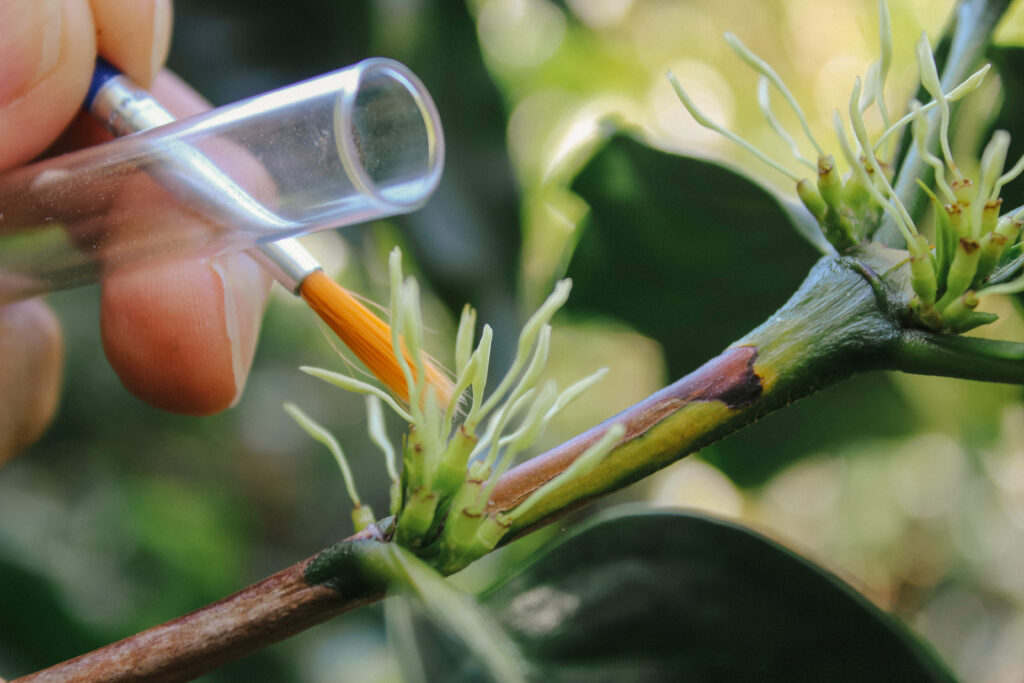
Crop innovation: developing climate-resistant coffee beans
Starbucks made headlines this month when it announced it had developed six arabica tree varietals that could withstand climate change. It would be giving away the seeds of these new coffee breads to suppliers and farmers for free, irrespective of whether these farmers sell to Starbucks.
“These varietals were developed over a decade of research and testing by the Starbucks agronomy team. They are naturally resistant to diseases like coffee leaf rust [and] some of the impacts of climate change, and were also selected for their excellent taste and high yield,” a company spokesperson tells Green Queen.
The company says its work goes beyond making coffee – it has a responsibility to care for its supply chain and the people making its business operations possible, from farmer to consumer. “We believe our varietals program is key to a healthy supply of coffee and our business for the next 50 years,” the spokesperson adds.
Farmers receive a catalogue with information on all six varietals, which lists the flavour notes, altitudes and harvesting times, among other information. For all the new breeds, it will take between two to three years until first production – and five of them are tolerant to coffee leaf rust too, which can be devastating to plantations and whose effects are amplified by climate change.
Along similar lines, Starbucks has an open-source agronomy programme, featuring a core collection of 617 different coffee hybrids and varietals, which are free to use for any coffee farmer. About three million coffee seeds are distributed from the core collection to farmers per year.
When asked about the impact of the sugar supply chain disruption on its operations, or how a potential Amazon dieback might affect it (given Latin America is Starbucks’ largest source of coffee), the spokesperson did not go into specifics. The company did not comment on the new wave of beanless coffee startups either.
10 Farmer Support Centers set up across coffee-growing regions

Walking the talk, Starbucks operates 10 Farmer Support Centers in key coffee-producing regions to help find solutions to the challenges faced by farmers, including those induced by climate change. The programme sees the company’s agronomists work one-on-one with farmers in the field to enhance quality and profitability.
“The primary goals of the agronomy team are to research and develop new coffee varieties, produce and distribute seeds of these coffee varieties, evaluate microorganisms to control pests and diseases, and train farmers on new coffee varieties, disease and pest management, and coffee nutrition,” says the spokesperson.
“Since first opening our Farmer Support Center in North Sumatra in 2015, we continue to grow relationships with farming communities to support sustainable, profitable and transparent coffee-growing practices, while supporting the welfare of coffee farmers, workers, their families and communities,” says Laura Elphick, director of partner and coffee engagement at Starbucks Asia-Pacific.
For example, the Farmer Support Centers in north Sumatra, Indonesia – the fourth-largest coffee-producing nation in the world – work with farming communities across the Aceh province, and other regions like Flores, Sulawesi, west and east Java, and Bali.
“The number of farmers participating in C.A.F.E. Practices [its Coffee and Farmer Equity programme] continues to grow, with over 55,000 coffee farmers with C.A.F.E. Practices status in Indonesia,” she adds.
100 million coffee tree donations by 2025
Starbucks has promised to provide 100 million healthy coffee trees to farmers by 2025, using its green coffee purchasing power. This is to help ensure that healthy, rust-resistant trees are planted each year in the regions most ravaged by climate change.
“Since 2017, more than 9.5 million climate-tolerant coffee trees have [been] distributed globally through Starbucks’ 100 million tree commitment to date,” says the spokesperson.
“In addition to the work we are leading globally, Starbucks APAC is working closely with the Indonesia market to donate coffee tree seeds to coffee farming communities across Indonesia, with 560,000 donated since the initiative began in 2017.”
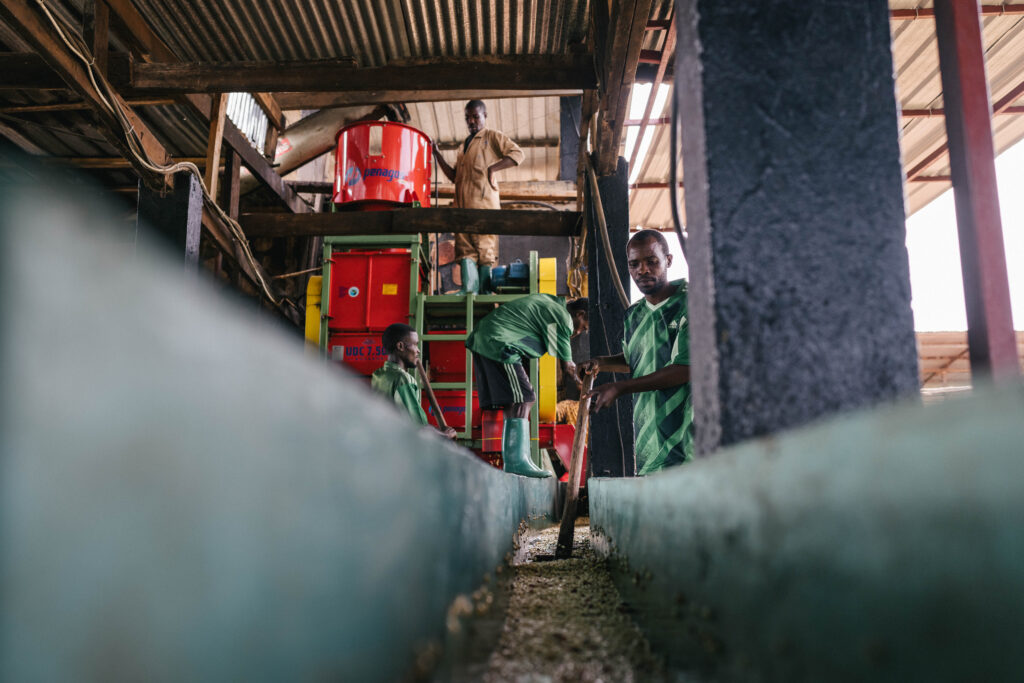
Water conservation: eco wet mills
To produce one cup of coffee, it takes 140 litres of water, according to one estimate. How is Starbucks addressing its water footprint? To meet its 2030 goal to halve water withdrawal and usage for green coffee, it has contracted over 1,300 eco wet mills, which depulp the outer cherry from the coffee beans with minimal water.
“By using eco wet mills, Starbucks has an opportunity to conserve water by ensuring farmers have access to more environmentally-friendly machines, which also standardises quality and increases processing efficiency for farmers,” the spokesperson says. “The preliminary results have demonstrated up to 90% water savings are possible in coffee processing using the new equipment.”
Continuous improvements on the plant-based menu front
“While we have done so much to innovate and invest in coffee at Starbucks, we know there is still much work left to do,” notes the spokesperson.
One area where it can do so, in fact, is plant-based milk. Starbucks still puts an added premium on non-dairy milk options for coffee (unless it’s soy milk), despite widespread calls for the company to get rid of the surcharge. While the company has listened – or been forced to listen – in a few countries, its home market of the US still carries this added cost.
When we asked Starbucks about this, its spokesperson pointed to a page on its website showcasing the strides it has made in terms of vegan food and drink offerings, adding: “Customers can choose to customise any beverage with a non-dairy milk on the menu for an additional charge. This is similar to other beverage customisations, such as an additional espresso shot or syrup (pricing varies by market).”
But plant-based milk shouldn’t be charged as a ‘customisation’ – for many people, who are either reducing their dairy consumption by choice or are intolerant to it, it’s a swap, not an added feature to their coffee. Starbucks says it “continues to introduce new and seasonal drinks with non-dairy milk as the standard recipe” – but it could do better by charging alt-milk just as they do ‘standard’ milk.
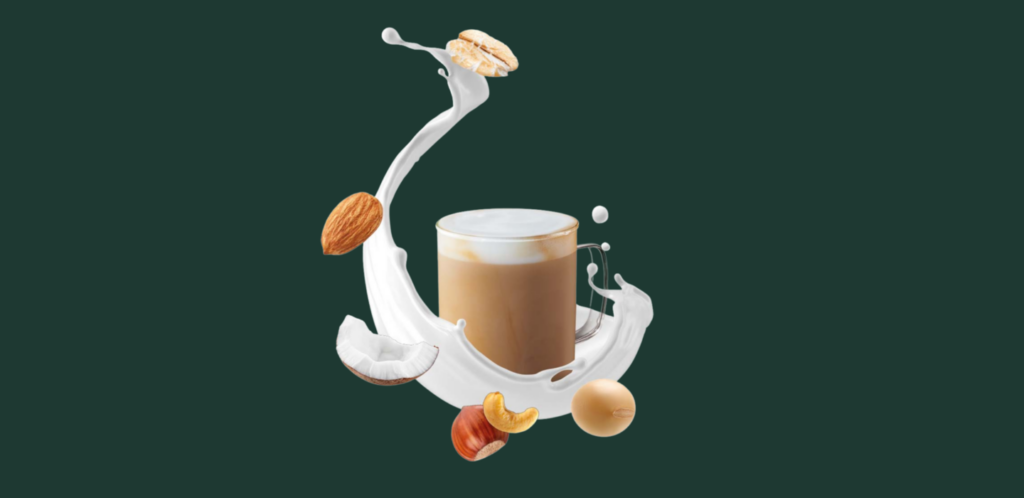
So yes, while Starbucks is making progress on its sustainability goals, it can – like all large companies – do more. The company has made some strides in packaging too – it opened a zero-waste store fitted with repurposed materials in Shanghai in 2021, and introduced a reusable cup-sharing initiative in Japan, before launching a global campaign to serve its handcrafted drinks in reusable cups in September of that year but
In addition, it allocated £1.4M ($1.6M) to six projects in the UK in partnership with environmental charity Hubbub to reduce packaging and single-use waste in the food and beverage industry. And in 2020, it followed through on a 2018 pledge to eliminate plastic straws and replace them with paper variants.
“Whether it’s in the areas of coffee development, reducing coffee’s impact on the environment, helping farmers be more profitable, supporting coffee communities or using our platforms to tell great stories about coffee,” says the Starbucks spokesperson, “we will continue to use our scale for good as we work together to ensure a sustainable future for coffee for all.”

